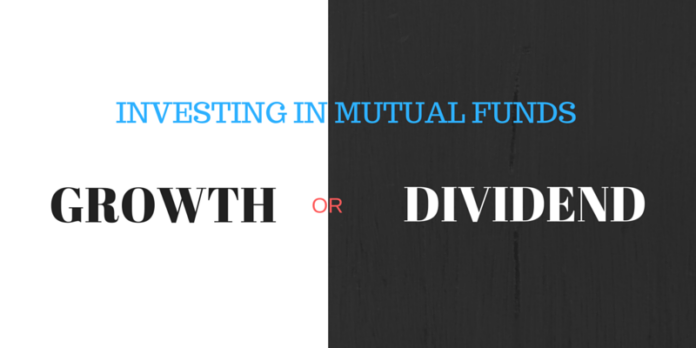There are 2 broad styles of decisions for investment trust investors – Dividend and Growth. Specialists say that investors need to choose either risk basis their investment objective. Tax implications ought to even be factored in before selecting any of the two choices.
The essential distinction between dividend and growth choices is that the profits created by the open-end fund are paid back to investors once sure intervals within the previous option and re-invested within the theme in the latter option.
The dividends paid are subtracted from the NAV creating ex-dividend NAV lower. Whereas the overall comes are lower compared to growth option in the long because of periodic payouts, taxation is as per the taxation block rate of the investor,” Khandare told metallic element Online.
Who ought to choose the Growth option?
Consultants counsel that investors who don’t want regular cash-flows could invest in growth choices. NAV in growth options is going to be higher since profits are reinvested within the scheme, investors may earn profits on profit and thereby get pleasure from compounding.
Total returns can sometimes be higher compared to dividend options over sufficiently long investment horizons. This feature may also suit those investors who need to make wealth.
“Younger investors will be additionally suited to the current option, people who are single or young couples with little children,” he aforementioned. Khandare said the expansion possibility could also be higher for those below the 10% bracket as there’s no Dividend Distribution Tax.
The NAV of the growth option can continually be above the dividend option as a result of the re-invested within the growth option could grow in price over time.
Who ought to choose the Dividend possibility?
Specialists say investors who need regular cash-flows from their investment could invest in dividend choices. However, the post-dividend NAV could also be lower within the dividend option.
It might also be appropriate for people who do not have a stable financial gain stream. Khandare urged that the dividend possibility could suit people falling within the 20-30% bracket.
“The Dividend possibility is best if a private falls under higher income bracket (20-30% & above) because the Dividend Distribution Tax is lower. Debt Schemes if the command for brief-term, lower than a year, then capital gains tax are else to income and taxed in line with the slab,” he said.
Which choice will offer additional returns within the long run?
The capitalist gets their endowed amount and compounded returns. Through growth options, investors needn’t worry regarding reinvesting the dividend received, it gets reinvested automatically,” he added.
However, consultants say that the choice of either choice may be a matter of individual choice and needs. The ultimate come can also rely on whether or not you’re investing in equity or debt funds.
Tax implications
According to Singh, the dividend option is taxed as per the income slab rates of the investor. However, tax implications for growth options begin on redeeming the fund.
Follow and connect with us on Facebook, LinkedIn & Twitter

